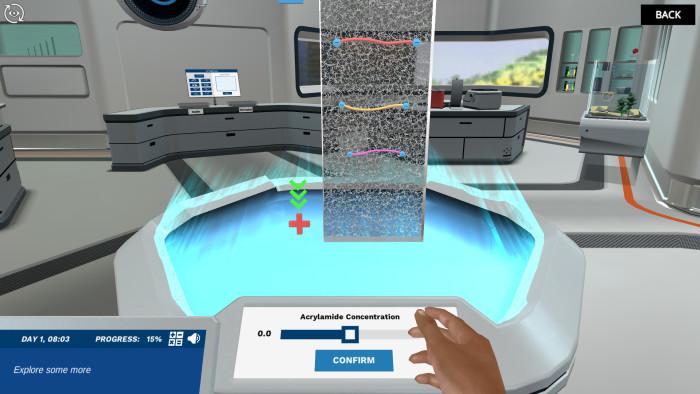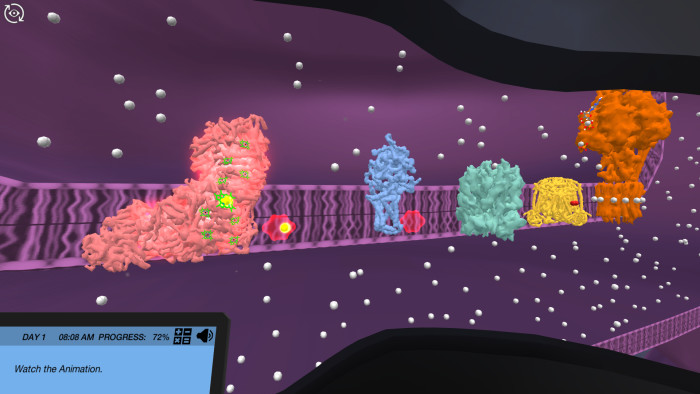
You want the best biology labs for your students. Maybe lesson planning is taking up too much time, you’re recycling the same labs over and over, biology lab equipment is too expensive, or you’re a new teacher.
Whatever the case, we’ve gathered 8 biology lab experiments you can teach your students. We’ve also matched accompanying virtual labs that can help teach some of the experiments
Because of the challenge of working with human DNA, it’s very difficult to do Next Generation Sequencing (NGS) in the classroom. NGS is an advanced sequencing technology where many short DNA molecules are sequenced simultaneously. The technology is also called massively parallel sequencing. These short DNA molecules are then assembled by comparing their sequence to a reference sequence, thereby revealing the complete DNA sequence that can be very long (as long as our genome!).
In Labster’s Next Generation Sequencing simulation, students will obtain a hair sample from an ancient man from Greenland, extract his DNA, and perform DNA sequencing. This practice helps them understand the different steps in sample preparation, cluster generation, sequencing, and data processing.
It’s highly unlikely that students will get the chance to solve a murder case in the classroom. With virtual labs, though, this is possible! Students can even see the Polymerase Chain Reaction (PCR) experiment at the molecular level. PCR is a method used to prepare billions of copies of specific DNA sequences, i.e, to amplify a DNA sample.
In Labster’s Polymerase Chain Reaction simulation, not only will students learn how to use the machine, but a 3D animation will show the PCR experiment at the molecular level, illustrating the structure of DNA and its replication.

For flawless bacterial culturing, students need to learn and master what are known as Aseptic Techniques. These techniques are used to ensure a "clean" lab environment. It is essential to ensure the reliability of experimental results. Messing up in a real lab comes with consequences, but in a virtual lab, even fires can happen without people getting hurt. This helps students learn, so they don’t make the same mistakes in person.
In Labster’s Aseptic Technique simulation, students will help a microbiologist prepare a pure culture that can be used to identify a microbe causing an infection! They’ll use good aseptic technique to avoid contamination of the sample, ensure their own safety, and avoid surprise fires in the lab.
There can be several concerns for handling SDS in the classroom, such as safety or expensive materials. Since SDS-PAGE is a complex topic to teach in conventional classroom setups, using interactive and virtual-lab methods are helpful tools! SDS-PAGE is commonly used as a method to separate proteins with molecular masses between 5 and 250 kDa.
In Labster’s SDS-PAGE simulation, students investigate each step of SDS-PAGE, from gel selection and sample preparation to chamber assembly and what happens when the current turns on to separate proteins solely by molecular weight. This brings students one step closer to identifying the protein.

Is it more exciting to look at a Punnett square on a piece of paper in class or engage with the concept in a gamified virtual simulation? A Punnett square is a visual representation of a cross. The genotypes of the parents are denoted along the top and the side of the grid. The possible genotypes of the offspring are obtained by combining the different alleles in the grid.
In Labster’s Inheritance with Punnett Squares simulation, students will learn about color blindness, the principles of inheritance, and how to draw a Punnett square. They’ll also use Punnett squares to predict whether future generations in a family will be color blind.
DNA is hard to visualize in everyday classrooms. However, with virtual labs students can see it up close and personal. Hair color, the curve of a smile, and even one’s likelihood of getting sick are at least in part determined by their DNA. But what is DNA made of, and how does it work?
In Labster’s DNA simulation, students will learn how DNA is structured and how DNA’s code translates to functional molecules called proteins.

Synthetic biology is a field of science that involves redesigning organisms for useful purposes by engineering them to have new abilities. Most students do not have access to this sort of technology, but with our virtual lab, students have access to cutting-edge research “at MIT.”
In Labster’s Synthetic Biology simulation, the student is the only hope for a patient with a rare form of cancer. They’ll use the specific microRNA profile of cancer cells to design an apoptotic biological circuit that is only activated in cancer cells.
Cellular respiration is the process by which animals and humans convert food into a type of energy usable by their cells, known as ATP. It might seem like students dislike this topic because it can be complicated. With virtual labs, they can learn the material and have fun along the way.
In one of 5 of Labster’s Cellular Respiration simulations, students will learn about how we metabolize glucose through aerobic and anaerobic respiration. They’ll be taken through the three stages of cellular respiration: glycolysis, the Krebs cycle, and the electron transport chain.


Labster helps universities and high schools enhance student success in STEM.
Request DemoRequest a demo to discover how Labster helps high schools and universities enhance student success.
Request Demo